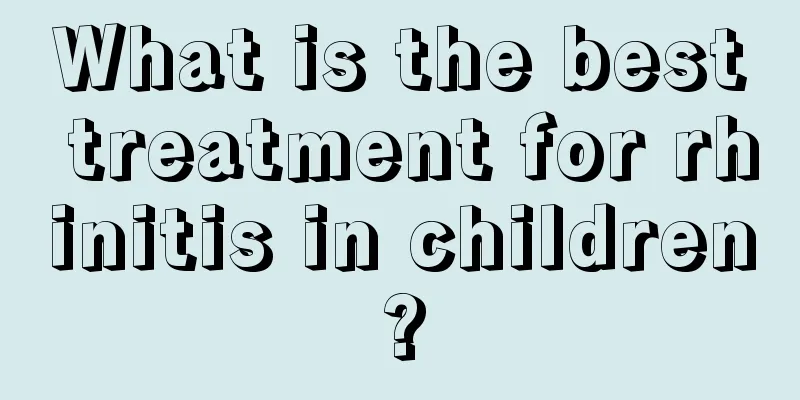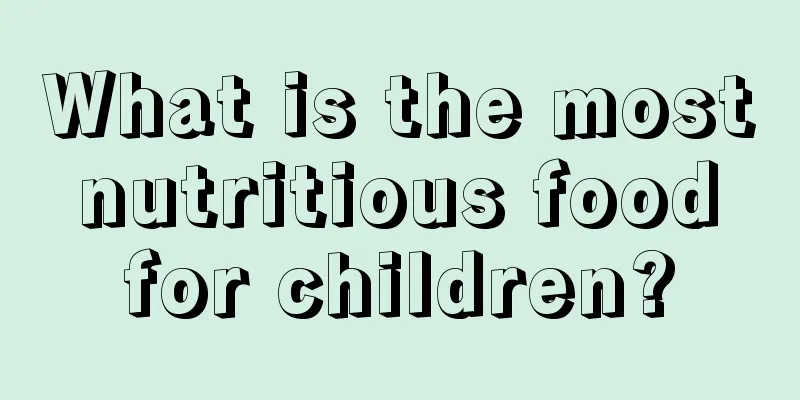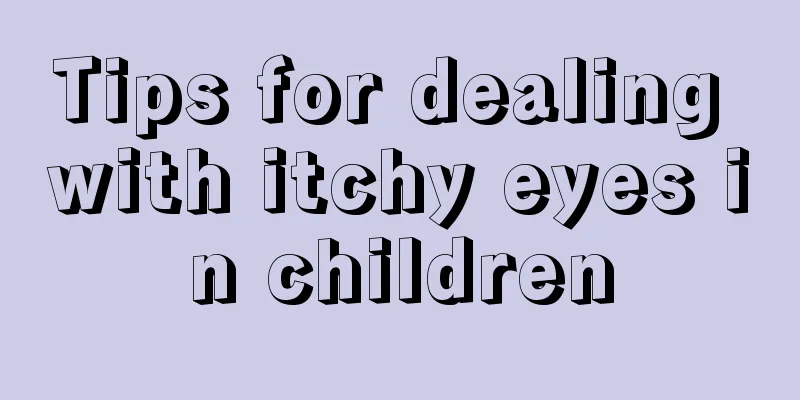Why does a child have pain around the navel and vomit?

|
As we all know, abdominal pain in children is a common pediatric disease, but there are usually many causes, such as: improper diet, catching a cold, gastrointestinal inflammation, etc. It is recommended that parents do not give their children medicines at will, and send their children to the hospital as soon as possible for timely diagnosis and treatment, and prescribe the right medicine. I will briefly introduce two common types of abdominal pain in children. If the following symptoms occur, parents should take appropriate measures in a timely manner. 1. Ascariasis Characteristics of abdominal pain When the environment changes or the child has a fever, diarrhea, hunger or eats spicy food, he or she will suddenly have abdominal pain. The child will cry, roll on the ground, bend over, sweat, and look pale. The abdominal pain is most severe around the navel. It is often accompanied by vomiting, and even roundworms may be vomited out. Sometimes abdominal pain can be relieved or even disappear on its own, and the child will appear tired. After fully recovering, he can play as usual. The pain lasts for several minutes each time and may occur every other day or several times a day. Causes of abdominal pain After the larvae of roundworms develop into adults in the small intestine, they have toxic effects and mechanical irritation to the small intestine, causing symptoms such as abdominal pain, diarrhea, and indigestion. When the number of adult worms reaches dozens or hundreds, the worms can twist into a ball and cause intestinal obstruction. Ascaris has the habit of drilling holes, and often drills into the appendix and bile duct, causing appendicitis and biliary ascariasis, resulting in abdominal pain. How to deal with it In recent years, there are many new symptomatic drugs with high efficacy and few side effects, such as levamisole, mebendazole, tetramisole, etc. Children with ascariasis can take these drugs under the guidance of a doctor. Special reminder Ascariasis is quite widespread in my country, with higher incidence in rural areas than in cities and more in children than in adults. The infection rate can reach over 85%. Therefore, prevention should be the priority: wash and cook vegetables, wash and peel fruits, do not drink raw water, and wash hands before and after meals. It is also important to cut your child's nails frequently, as the dirt under the nails often contains many roundworm eggs. 2. Acute appendicitis Characteristics of abdominal pain At first, the child feels pain in the stomach or around the belly button, which turns into pain in the lower right abdomen after a few hours. Pressing the right lower abdomen of a child with your hand will intensify the child's crying. The child is often accompanied by symptoms such as nausea and vomiting, and then has a fever, and the body temperature can rise to around 39°C. The abdominal pain is usually not severe, but the child often lies in bed with his right leg curled up or walks with a bent back. If the child cannot express the pain in words, his crying will be different from usual, and he will curl up his body and break out in cold sweats. If the baby cries for more than 3 hours, parents should suspect the possibility of appendicitis. Associated symptoms Acute appendicitis can occur in children of all ages and is relatively common. In addition to abdominal pain, the following symptoms may also occur: 1. Nausea and vomiting: Most children experience vomiting, and the vomitus is mostly undigested food. 2. Fever: Most children start to have a fever shortly after the onset of abdominal pain. Some children may cry and have a fever at the same time. 3. Afraid of having the belly rubbed: The child is afraid that the parents or doctors will press hard on the lower right abdomen, which will cause the abdominal wall muscles to tighten and the child will refuse to have his abdomen rubbed. Some children also have atypical symptoms. For example, some children have diarrhea from the beginning, which is very similar to enteritis. How to deal with it Appendicitis in children develops quickly. If it persists for a long time, appendicitis perforation may cause purulent peritonitis, which may endanger the child's life. Therefore, if a child is found to have the above symptoms, he or she should be sent to the hospital as soon as possible. Special reminder Since acute appendicitis is often accompanied by fever, children with atypical abdominal pain may be easily mistaken by their parents as having a cold or diarrhea, so parents should pay attention and observe carefully. |
<<: What medicine should children take for urinary tract infection
>>: What is the reason for children's yellow urine
Recommend
What causes children’s feet to become dry and cracked?
Every winter, the feet will become dry and peelin...
Dietary treatment for allergic cough in children, young parents please remember this!
If a child has an allergic cough and this symptom...
What to do if your child has difficulty breathing while sleeping
Many parents find that their babies have rapid an...
What are the symptoms of calcium deficiency in children?
The human body contains more than 60 elements, in...
Healthy weight loss methods for teenagers
I believe everyone knows the benefits of losing w...
There is a lump on the child's neck
If a child has a lump on his neck, the most likel...
What should I do if my 2-year-old baby vomits and has diarrhea?
Babies are a group that is very prone to illness....
How can children grow taller quickly?
The healthy growth of children is the greatest wi...
What should I do if my child has obsessive-compulsive disorder?
There are many children who are the only children...
How to control the amount of milk for newborn babies?
For new parents, it is the first time just like t...
What to do if your child has tooth decay in their baby teeth
Because of frequent consumption of sweets and lac...
Can I give my child zinc supplements in summer?
Zinc supplementation for children can be done all...
What to do if your newborn baby has tears in his eyes
The care for newborns must be comprehensive. Many...
What are the things to pay attention to when choosing a cooling patch?
Whenever the seasons change, many people with low...
Add complementary food signal
When babies often cry and become restless because...









